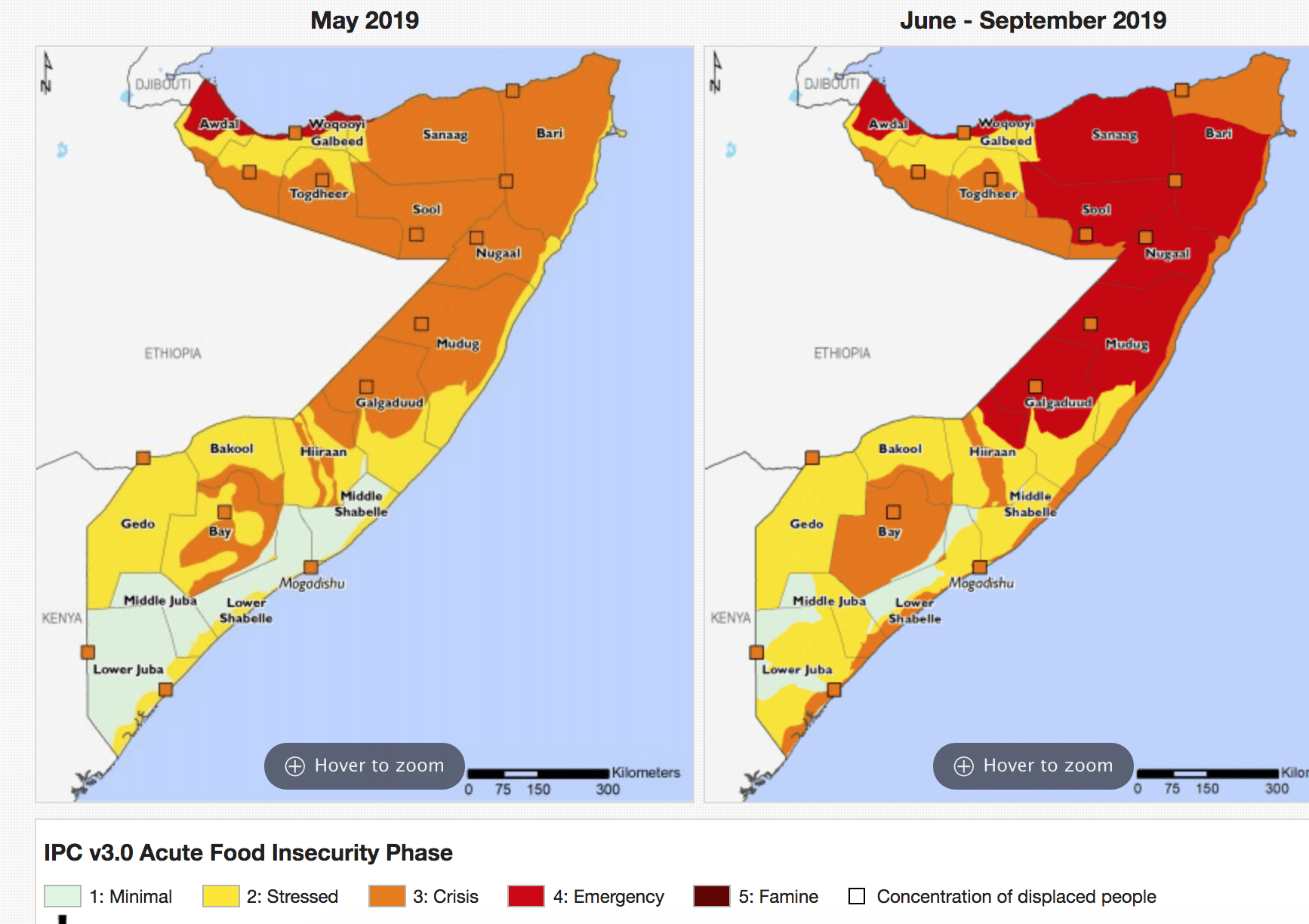Somalia is facing a new food crisis. By the middle of the summer over 5 million people will be in some level of food insecurity. Some 2.2 million of those people will face what is known as a “crisis level” of food insecurity — this is the kind of food insecurity that can escalate quickly and lead to a widespread and devastating famine.
The immediate cause of this crisis is a rainless rainy season, which has devastated crops, killed livestock and is ruining livelihoods. Now, according to projections from the UN, this drought is threatening to plunge large swaths of the country into pre-famine levels of a food crisis.
UN’s Emergency Relief Coordinator Mark Lowcock issued this warning on Tuesday, saying “What was forecast to be an average rainy season in Somalia is now one of the driest on record in over 35 years. Communities that were already vulnerable due to past droughts are again facing severe hunger and water scarcity and are at risk from deadly communicable diseases.”
The UN is appealing for $700 million to avert a potential famine.
We can respond in one of two ways. We can wait until the Somalis’ suffering has reached extreme levels and then act. Or, we can anticipate the crisis and act now to prevent it from becoming a famine. That is the cheaper – and more humane – option. I recommend the second approach.
— Mark Lowcock (@UNReliefChief) June 5, 2019
The United Nations system has a very specific benchmarks for food security, which is measured on a graded scale. This map from the Famine Early Warning System shows why the current situation is so dire. Large portions of the country are expected to deteriorate from “crisis” level to “emergency level.”

The difference between a “crisis” and an “emergency” is laid out by what is known at the UN as the “Integrated Phase Classification.” This is a way to measure and determine levels of food insecurity.

As you can see, moving from crisis level to emergency level means food security has gotten considerably worse, in many cases forcing people to completely liquidate whatever assets they have to survive. When large numbers of people no longer have assets to liquidate and no longer have access to food at all is when mortality rates skyrocket–particularly for children. When at least one in five households faces an extreme lack of food, and more than 30 percent of children under five are suffering from acute malnutrition (wasting), and at least two people out of every 10,000 are dying each day, then a famine is declared.
There is no famine in Somalia…yet. But if this crisis continues and if that $700 million is not raised from international donors, famine could strike Somalia later this year.
